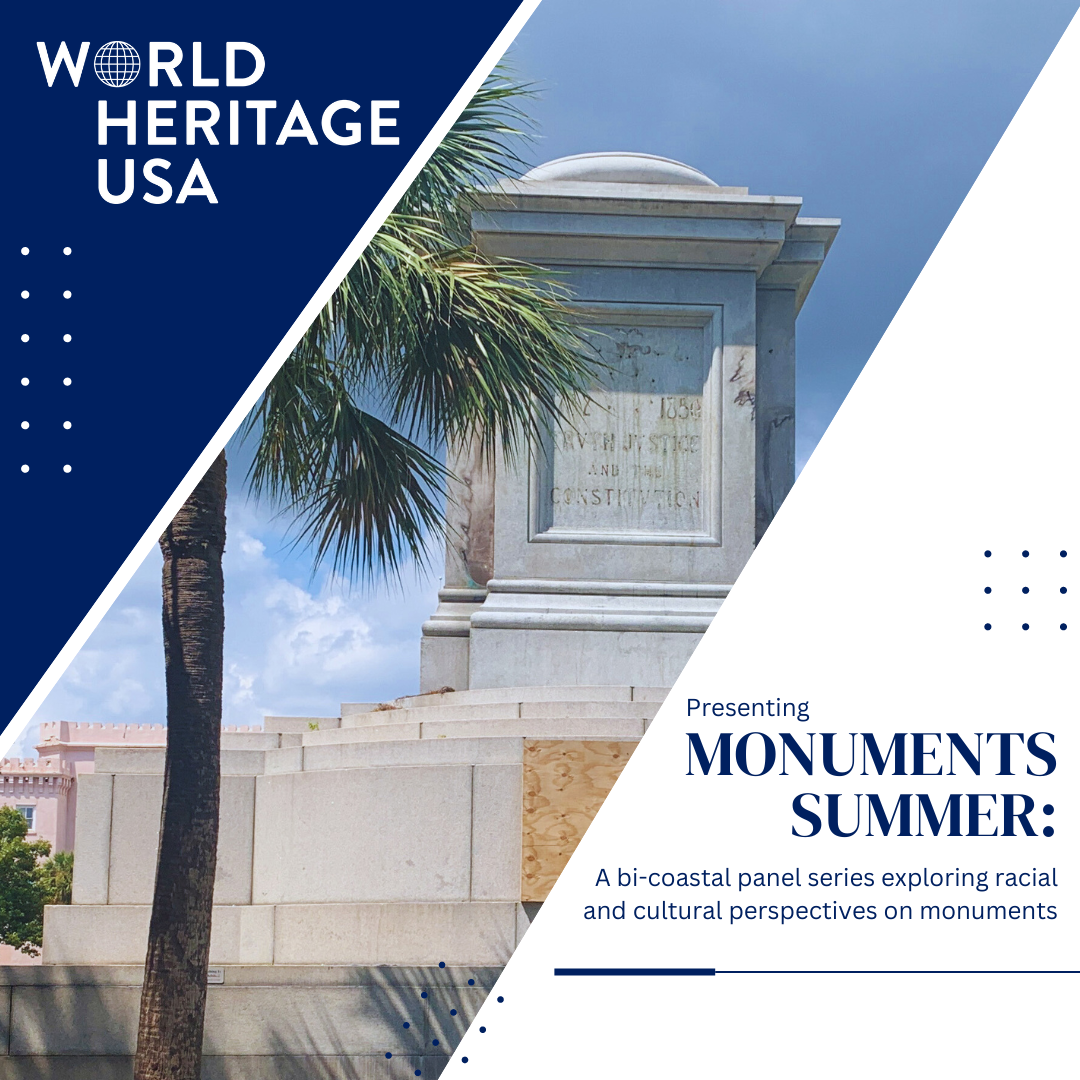Thank You For Making Monuments Summer a Success!
World Heritage USA would like to thank everyone who attended, supported, and streamed our Monuments Summer events.
Below is a brief recap of the events in Charleston and San Diego. We hope to see you at future events as we approach the future of public space with engaging discussions and share unique approaches around the world!
Monuments Summer: Aspiring Towards a Common History
On July 21, 2023, the historic Mother Emanuel AME Church in Charleston hosted a gathering dedicated to reconciliation, progress, and an in-depth exploration of the nation’s complex past. The event was co-hosted with the Charleston Forum. Inspired by Charleston’s Special Commission on Racial Equity, Inclusion, and Conciliation Report, the evening discussion centered on the Report’s recommendation to “integrate complex and nuanced histories that highlight BIPOC (Black, Indigenous, and Other People of Color) histories and cultures into the public school curricula.” The panel composed of historians and mayors discussed America’s public monuments landscape and what it might mean to implement the report’s suggestions.
The event was initiated with a prayer by Pastor Eric Manning, pastor of Mother Emanuel AME. The prayer set the tone for an evening filled with profound insights and discussions about the nation’s history.
The Director of the Monuments Toolkit Project at World Heritage USA, Cequyna Moore, highlighted that the crux of the organization’s mission is advocacy, drawing attention to the importance of addressing cultural heritage, climate change, and social justice.
Guided by Reverend Nelson Rivers III, a distinguished figure in the civil rights movement in South Carolina, the forum ventured into the role and responsibility of public historians. This discussion brought forth insights from five esteemed panelists, including Ty Seidule, Historian Michael Allen, Dr. Adam Domby, Dr. Felice Knight, and Dr. Tamara T. Butler.
One of the poignant moments of the night was when Michael Allen delved into the intricacies of America’s DNA, emphasizing that to truly understand and reshape our nation’s future, we must confront the sins of the past. He pointed out that confronting these sins is essential, as they still influence various facets of daily life, including education and healthcare.
The mayors on the panel, William Bell (Birmingham) and John Tecklenburg (Charleston), offered their unique perspectives on addressing the challenges of remembrance. They discussed the tangible heritage of the Confederacy, the contested memory of the South, and the symbolic importance of monuments and statues. Mayor Bell’s recount of the challenges faced in Alabama regarding Confederate statue removal shed light on the legal and societal obstacles cities face when addressing this issue.
In reflection, the Monuments Summer Charleston Forum served as a beacon, showcasing the power of dialogue tp shape a more inclusive and understanding future. The insights from the panelists, combined with the profound understanding of the past, have undoubtedly sown the seeds for a brighter and more informed tomorrow.
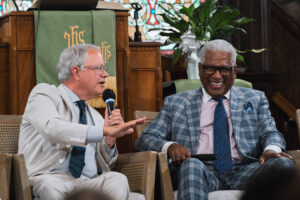
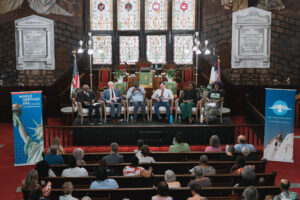
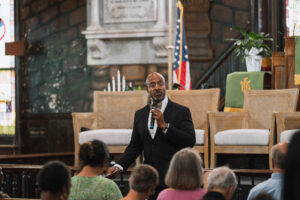
Monuments Summer: Cabrillo National Monument
Our Monuments Summer: A Season of Dialogue – Cabrillo National Monument conference focused on gauging the potential for museums to become the stewards of monuments of oppression. Monuments of oppression are facing greater reassessment by community leaders and municipalities. As our values change, the relevance and significance of venerated figures comes into question. In collaboration with the San Diego History Center, World Heritage USA hosted a platform for museum professionals and Indigenous Peoples to address the challenge of retaining history without erasing cultural narratives. Although many praise Juan Rodriguez Cabrillo for his development of the American West, the atrocities he committed during this mission are not highlighted in his monuments and memorabilia. These historically inaccurate monuments suppress mistreatment and handicap opportunities to highlight important figures in the community and culture of this land. A total of 34 attendees met at the San Diego History Center for a series of interpersonal discussions and informative presentations from Professor Ethan Banegas of San Diego University, and History Colorado’s Chief Creative Officer and Director of Interpretation and Research, Jason Hanson.
Professor Banegas began by posing the question, “Why Celebrate Juan Cabrillo?” Although he may be famous for “discovering” the western frontier, the truth is that Indigenous Tribes were present on land and water generations before the Spaniards arrived. As Bobby Wallace of the Barona Band of Mission Indians remarked, “We’ve been in this water for a long time. Everyone had mutual respect over these areas … but a Conquistador, a statue of one on top of the black earth overlooking the ocean, shouldn’t be there.”
Professor Banegas explained that the Indigenous presence in San Diego was marginalized by Settler Colonialism. Settler Colonialism occurs when foreign settlers occupy and reside on land that has been inhabited by Indigenous People. The interactions that follow between the two civilizations have historically caused the “displacement, replacement; depopulation, reduction, assimilation; and genocide of the native culture and its people.” One common consequence of Settler Colonialism is the erasure and rebranding of names. For example, present day streets and neighborhood names such as Cuyamaca and La Jolla are Kumeyaay in origin, not Spanish.
What stood out during Professor Banegas’s presentation was the truth that “Who is Telling the Story Matters.” In an era where history is easily fabricated and rewritten, the culture and lifestyles of those affected by Colonial narratives are at risk of erasure. As Pat Curo of the Barona Band of Kumeyaay Indians explained in an interview with Professor Banegas, “…when your dad was young, it was a very common thing to go into [his house] and hear him talk Indian. The Indian language was spoken very much when my generation were kids. You could hear it every day.” One of the questions asked by our audience inquired about the Kumeyaay figures and monuments of today. Professor Banegas responded in favor of erecting monuments and statues of Indigenous Peoples. However, “We’re actually operating in a western worldview when we’re talking about monuments and statues, and Indigenous worldviews are very different….”
In closing, Professor Banegas expressed his belief that the new generation will be the ones to restore the tangible culture of the Kumeyaay Nation. The social climate around monuments and sites today is one of revision and ever-changing values. “Especially with so much information going on with not just George Floyd and BLM [Black Lives Matter], but also with movements like the Dakota Pipeline. I’m absolutely aware that we’re ready and I think the representation is something like us coming together as the 12 Kumeyaay Bands … and funding a new statue where [the Cabrillo National Monument stands] that represents us as the first people”.
Director Hanson began with recounting his upbringing in Sacramento, California, where he recalled creating a mission in 4th grade as well as his recent trip to Peru, Columbia and Mexico, and the differing ways in which these countries present their histories of colonization.
Director Hanson discussed History Colorado’s “On Guard” Civil War Monument, representing a cavalryman from the American Civil War. A Union Army soldier in raincoat, books, spurs, and hat, holding a rifle and with a sheathed saber, the bronze scupture was cast by the Bureau Brothers and inaugurated on July 24, 1909. The monument displays a soldier who interestingly enough was a composite portrait (no specific person, rather a representation) of an idealized Union soldier who was created by Captain Jack Howland, a trained artist of the Parisian school. Howland was himself “a veteran of the Civil War who fought with Colorado’s troops in one consequential battle, the Battle of Glorieta Pass, where Colorado troops stopped an invading force of Confederates who were trying to capture the Colorado gold fields and then march on to California, hoping to divert all the wealth that was funding the Union war effort to the Confederate rebellion.” A different outcome to this decisive battle would have made the Civil War look different. Director Hanson revealed that the monument’s prominent position on the western steps of the Capitol’s Civic Center Park has made it a focal point for public gatherings like Super Bowls, Stanley Cups, and social justice protests such as the “Women’s March, Chicano Movement, immigration rallies, and the George Floyd protests of 2020.”
Director Hanson mentioned how during the George Floyd protests, museum curators from History Colorado safely documented the unrest. The statue was absorbed into the protests as protestors vandalized it. All this changed when on the night of June 25th the monument was toppled by “unknown actors.”
Director Hanson described the reasons as to why the monument was toppled. He mentioned that the Civil War in the West and the East were different. It was different because the troops were actively engaged in “removing tribes from their homelands as part of the National Settlement Project.” This was also facilitated with the Homestead Act and Transcontinental Railroad which incentivized Americans to move west. Director Hanson described the worst event of the western Civil War as the Sand Creek Massacre of 1864, in which “Union army troops attacked a peaceful camp of Cheyenne and Arapaho people–mostly women, children and the elderly–at the time they were camped under assurances of protection from the United States Army…. Ultimately 230 or more were killed that morning.” Shockingly, the troops then proceeded to parade back to Denver with souvenirs like “body parts of the dead.” The Army and the Congress conducted an investigation of the event and issued a report labeling it an “unjust and dishonorable massacre” in 1865. Director Hanson continued to say that there area still some in Denver who do not accept the label of massacre and push for litigation to have it labeled a battle instead, like Glorieta Pass, on the monument’s plaque. Around the beginning of the 21st century, the Cheyenne and Arapaho placed a reinterpreted plaque as a reminder that it commemorated “a massacre not a battle.”
After its toppling, the monument was placed in the History Colorado Center museum for safekeeping and to encourage a constructive dialogue. It was installed at the base of the museum’s grand staircase in October of 2020 to have visitors view it from a personal angle “since monuments are always above us and are larger than life.” Director Hanson then commented on its interpretation, which was realized in three distinct phases: 1) exhibition board commemorating the actual event; 2) exhibition board describing the circumstances of installment and; 3) exhibition boards detailing the postmodern meaning of the monument.
Director Hanson concluded with the continuation of dialogue that invited visitors to answer with sticky notes the two questions: Do we need monuments? What do you think their purpose should be? The most popular answer was that monuments are “important social memories, and that people were uncomfortable with them being censored by being taken away. For better or for worse, they are important social memories and we could learn from them.”
The conference ended with a panelist discussion led by Monuments Toolkit Director Cequyna Moore on topics such as the differences in Eastern and Western U.S. cultural heritage, intergenerational trauma, museum space as a community institution, and the efficiency of sticky notes to provide feedback. This concluded a fruitful and important discussion.
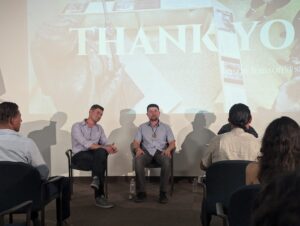
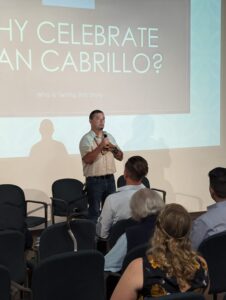
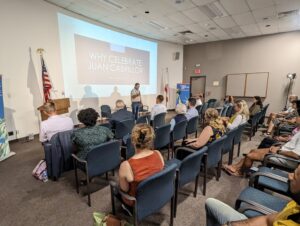
PAST NOTICES
A Season of Dialogue
World Heritage USA is proud to present a new, bi-coastal panel event series titled Monuments Summer: A Season of Dialogue featuring national public figures and scholars as they examine the racial and cultural dynamics of public monuments. The panels will explore these topics in the contexts of two communities; the California coast in San Diego, CA, and the American South in Charleston, SC.
In both Charleston and San Diego, monuments have been at the center of public debate in recent years– sparking conversations of how themes of racial injustice, slavery, and colonialism are represented in public spaces, and whose stories are being left untold.
Upcoming Event
Monuments Summer: Cabrillo National Monument
When: Friday, August 18 @ 1:00pm
Where: San Diego History Center in San Diego, CA
This panel event featuring historians and museum experts will explore the history of the Cabrillo National Monument, the background of Juan Rodriguez Cabrillo and his impact on the Kumeyaay Nation, and how museums can serve as facilitators of community dialogue about public monuments.
Past Event
Aspiring Towards a Common History, Co-Hosted by The Charleston Forum
When: Friday, July 21
Where: Mother Emanuel AME Church in Charleston, SC
The 2015 tragedy at Mother Emanuel AME Church that killed nine black worshippers raised a nationwide discussion about Confederate symbolism in the South and underscored the need to tell a fuller story with public monuments and markers. Nationally recognized southern historians and Southeastern mayors will participate in panel discussions about the future of public history at this historic church, itself a cultural icon with a long history of empowering Black communities. World Heritage USA is proud to partner with The Charleston Forum, a group of local leaders fostering open conversations on otherwise divisive issues involving race, for this event.
________________
The events are free to attend, but tickets are required as space is limited. They will also be livestreamed on the World Heritage USA Facebook page.
Tickets to the San Diego event will be made available soon. Follow World Heritage USA for updates.
We look forward to seeing you at one of these exciting events this summer!

